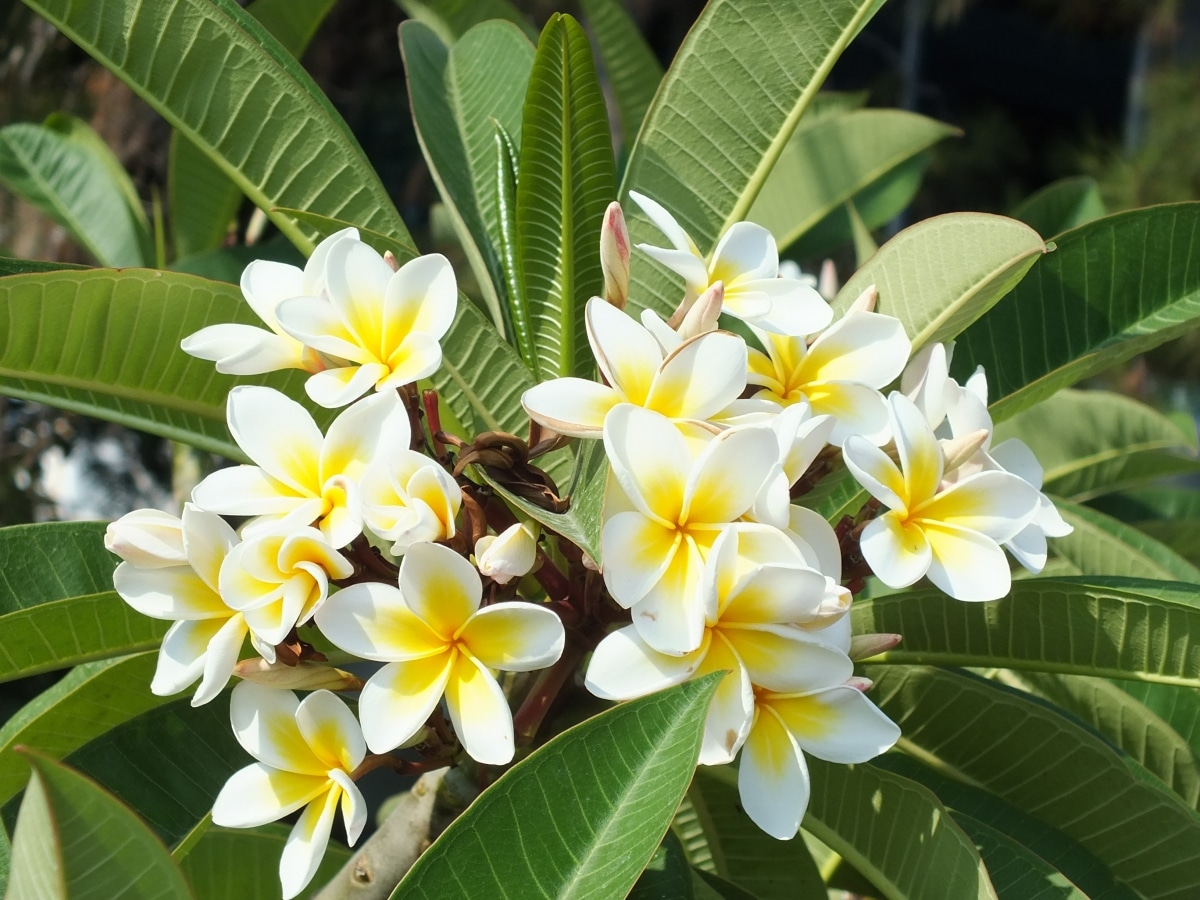
The Plumeria or frangipani is a type of tree or more commonly shrub that produces flowers grouped in terminal tops during the summer. They are very, very pretty, and they also smell wonderful, so their ornamental interest is high.
But if you thought there was only one variety let me tell you you were wrong. Luckily, or unfortunately for those of us who love these plants, There are several types of Plumeria that you can meet here.
5 types of Plumeria
The gender Plumeria It includes eleven different species, the vast majority of which are native to tropical America. But not all of them are marketed; in fact, only five types are well known, and of these, in countries like Spain, unfortunately it is only possible to find two or three with relative ease.
white plumeria
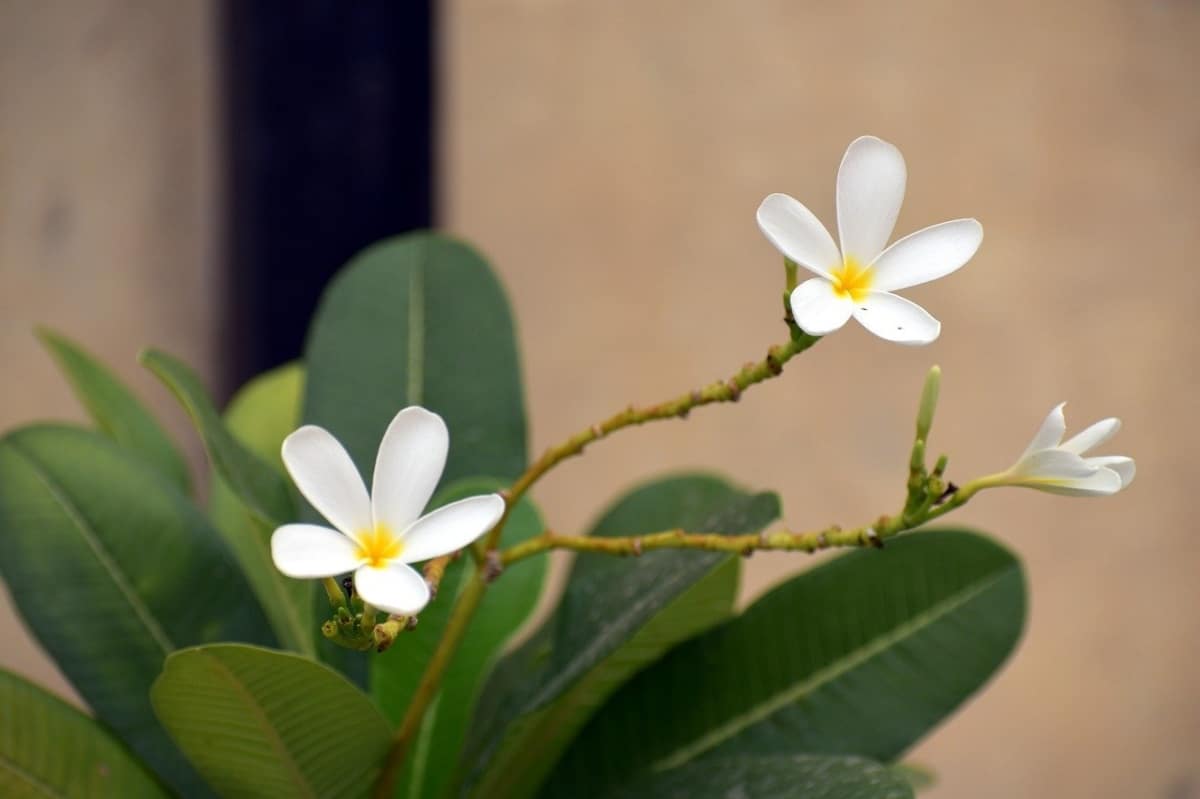
La white plumeria It is what we call the white wallflower. It is a small evergreen tree that lives from southern Mexico to the Antilles. It grows to 3-4 meters, and has a crown formed by thick branches that branch. The foliage is long and narrow, bright green on the upper side and somewhat paler on the underside. It blooms throughout the year, although in temperate climates it will only do so in summer. Its flowers are white with a yellow center.
plumeria filifolia
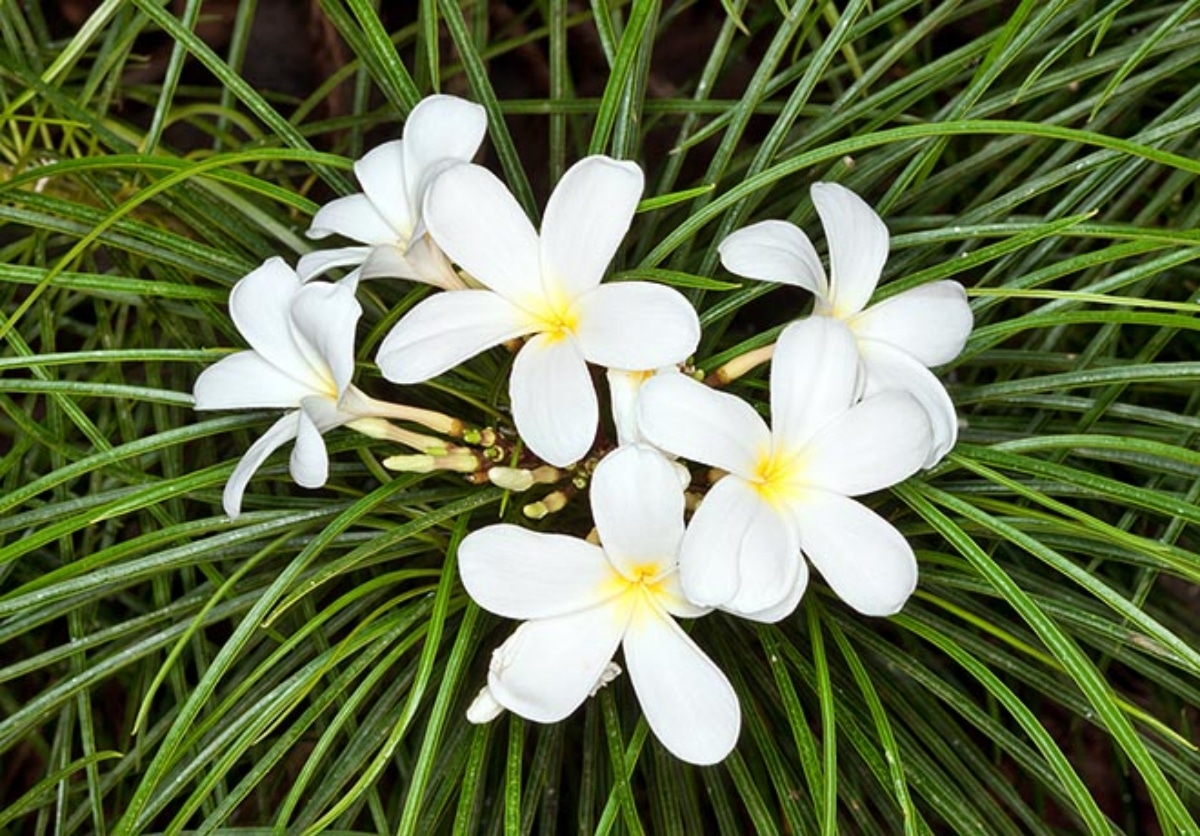
Image - Monaco Nature Encyclopedia
La plumeria filifolia is the most curious, since as his surname indicates has very, very thin leaves. It is native to Cuba, and grows as a 2-3 meter tall shrub. Its flowers are white with a yellow throat, and each measure about 2 centimeters in diameter.
obtuse plumeria

Image - Wikimedia / thibaudaronson
La obtuse plumeria is another variety of white flowers with a yellow center. It is native to Mexico, Florida, Guatemala and the West Indies, and it is a shrub that grows to a maximum of 5 meters in height. The leaves are a beautiful dark green, and have the typical lanceolate shape of other species of its genus.
plumeria pudica
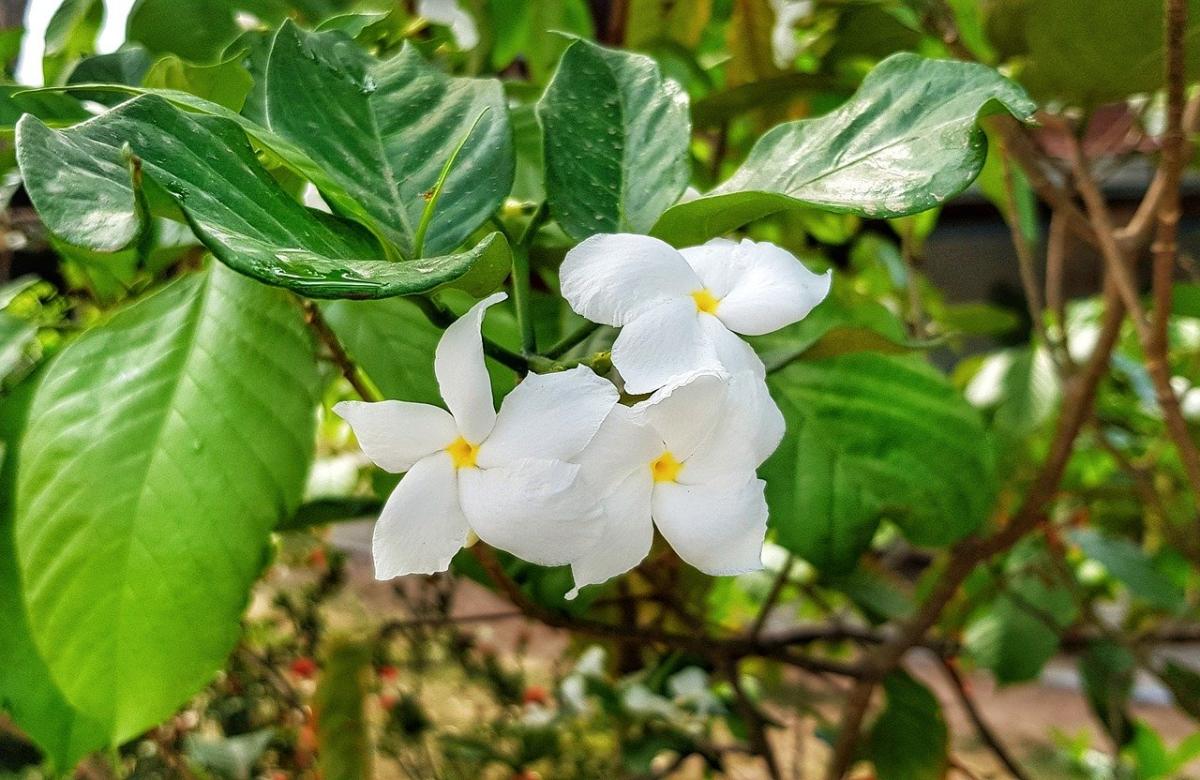
La plumeria pudica It is a species that is known by the names of the white or Mapuche poppy. It is evergreen, or semi-deciduous depending on the climate, and can be 5 meters high. Its leaves are arrow-shaped and 30 inches long. The flowers are immaculate white, and are grouped in terminal inflorescences 25 centimeters long.. Of course, unlike others, these have no aroma.
red plumeria
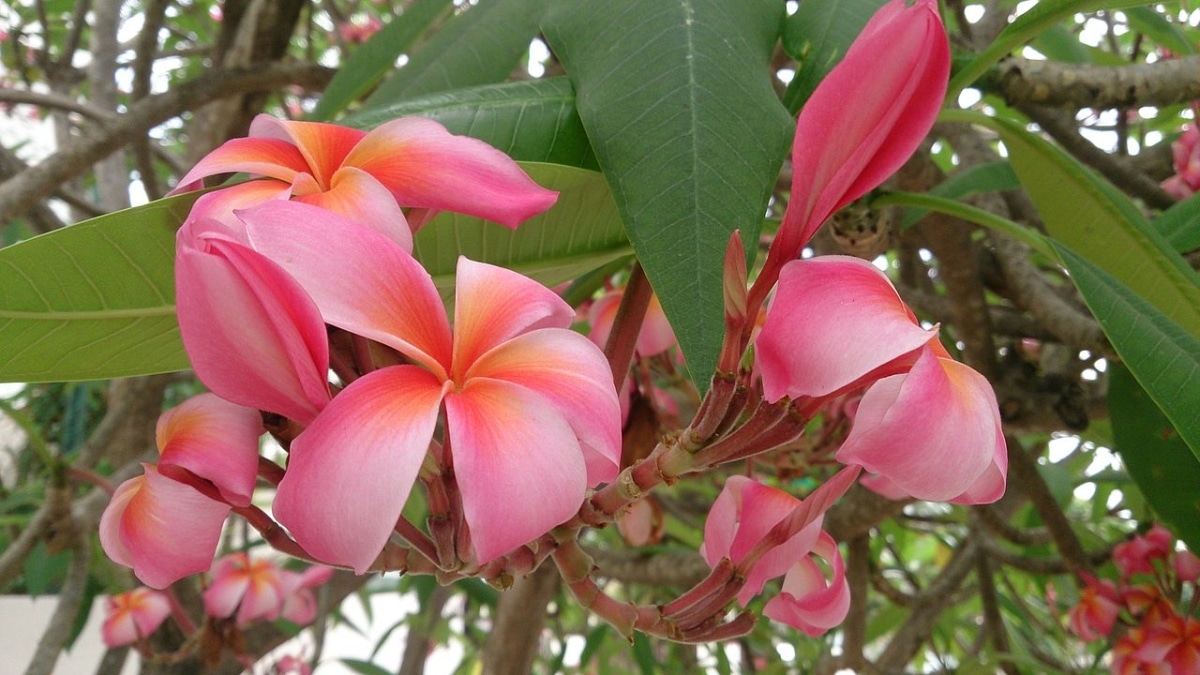
Image - Wikimedia / Mokkie
La red plumeria or frangipani is a deciduous tree originating from Mexico to Venezuela, which can measure up to 25 meters in height but in cultivation it only grows up to 8 meters. The leaves are large, 15 to 30 centimeters long, greenish in color and lanceolate in shape. Its flowers are white or pink and are grouped in inflorescences that measure 15 to 30 centimeters.
Plumeria x stenopetala
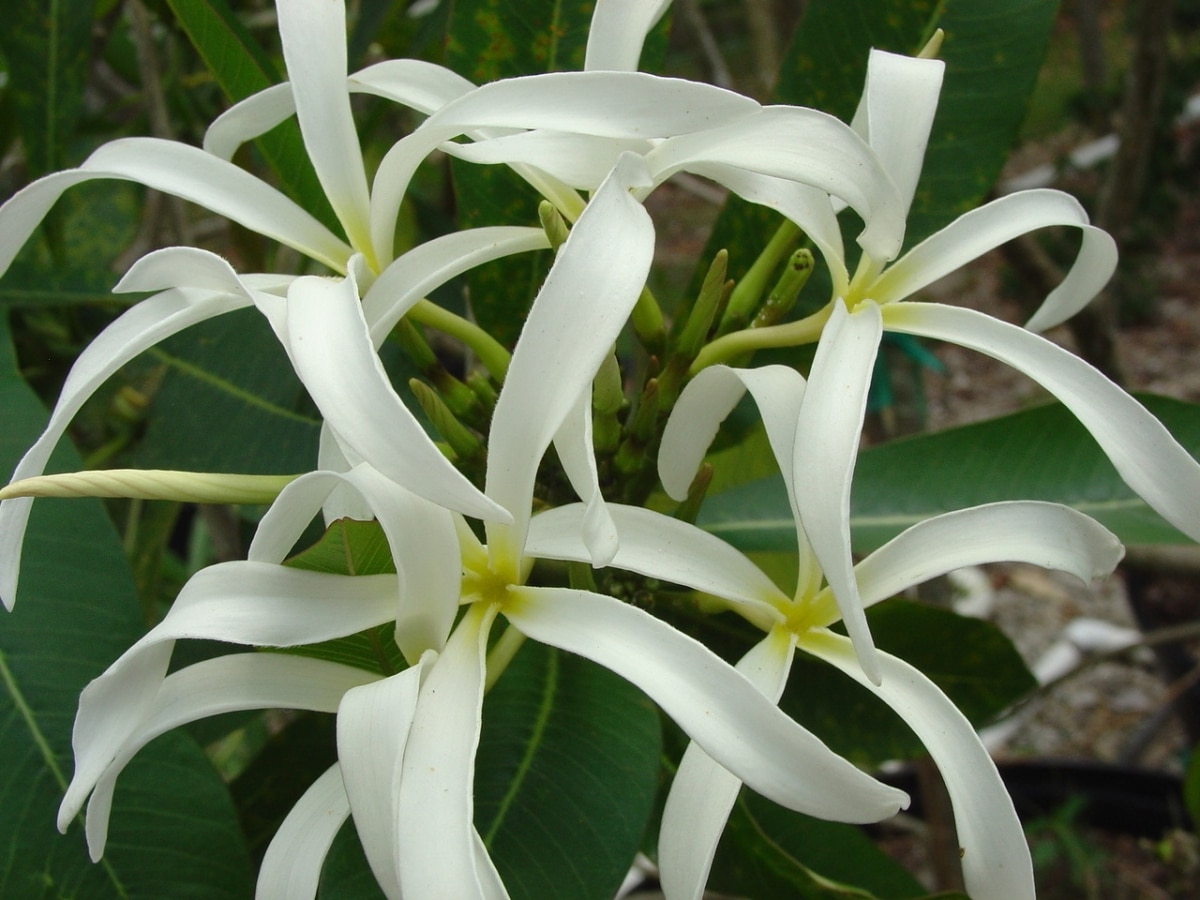
Image - Florida Colors Nursery
La Plumeria x stenopetahala It is a hybrid known as narrow-petalled frangipani, a name that refers to its petals. These they are much thinner and longer than what is usual in this type of plants; in addition to white and very fragrant. As for its leaves, you should know that they are long and narrow.
How is plumeria cared for?
It is possible that after knowing some types of Plumeria, you want to know what their care is. Well then, let's see it:
- Location: these are plants that need sun, so you have to put them in a place where they will be exposed to it.
- Earth:
- Pot: you can use coconut fiber (on sale here), although if in your area it tends to rain frequently and / or the humidity is very high, we advise you to mix pumice with peat in equal parts.
- Garden: the soil must have very good drainage, as its roots do not tolerate waterlogging.
- Irrigation: in general it will be watered frequently in summer, as it is when they grow much faster and when they need water the most. In fact, if the weather is very dry you may have to water it 3, maybe 4 times a week. However, in winter you should reduce the frequency of watering, and let the soil remain dry longer.
- Subscriber: use a liquid fertilizer that stimulates the flowering of your Plumeria, which is rich in phosphorus and potassium like the one they sell here. Apply it in spring and summer, following the instructions for use since depending on the manufacturer you may have to dilute a certain amount in water before adding it to the plant.
- Pruning: Plumeria should not be pruned. If it has suffered cold damage and you see that a branch is dry, then yes you can cut it in spring, but nothing else.
- Multiplication: multiplied by seeds or stem cuttings in spring. The first ones you have to sow them in seedling trays and place them near a heat source so that they germinate; the cuttings, on the other hand, should be planted in individual pots with coconut fiber or vermiculite, in semi-shade.
- Rusticity: up to -1ºC. Variety Plumeria rubra var acutifolia It can be grown in areas where it drops to -1ºC (or -5ºC if sheltered) in a timely manner. In the event that it falls more in your area, we advise you to protect it in a greenhouse, or failing that, inside the home.
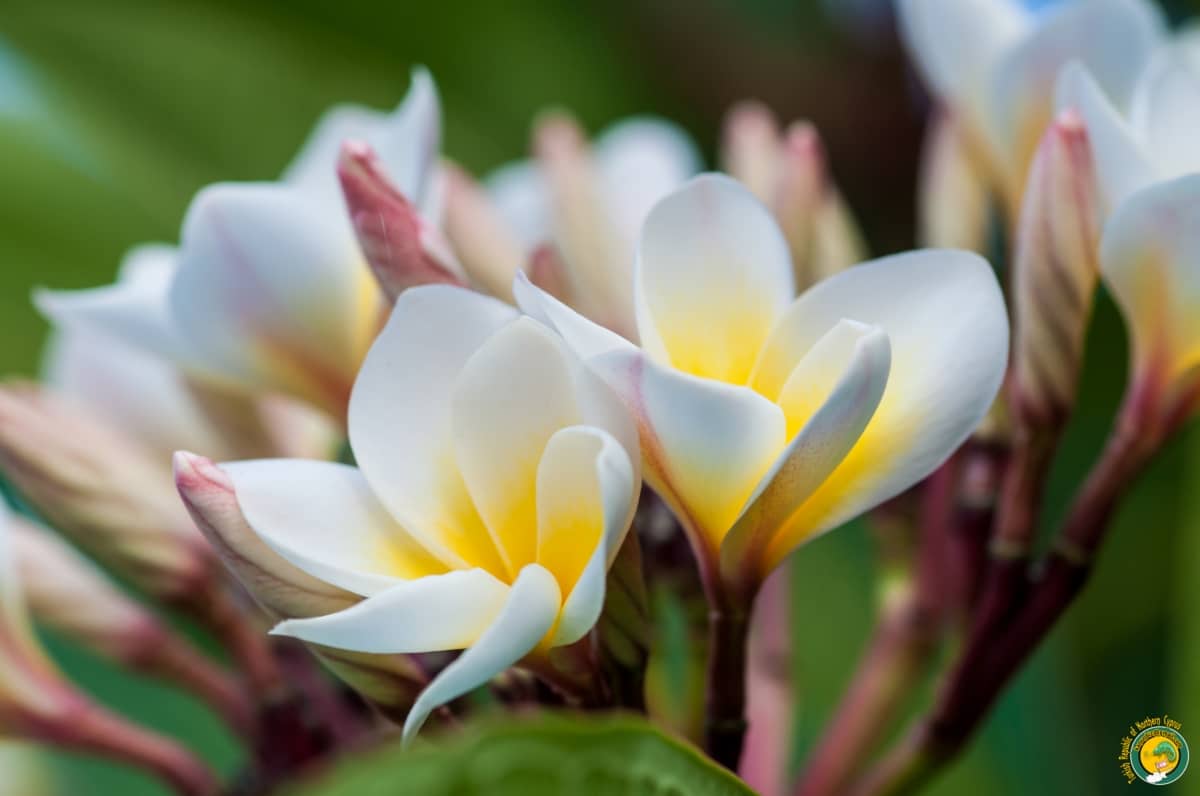
What do you think of the different types of Plumeria that we have shown you?